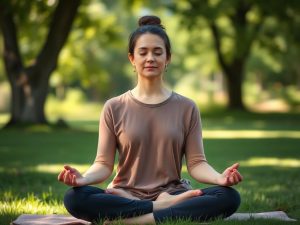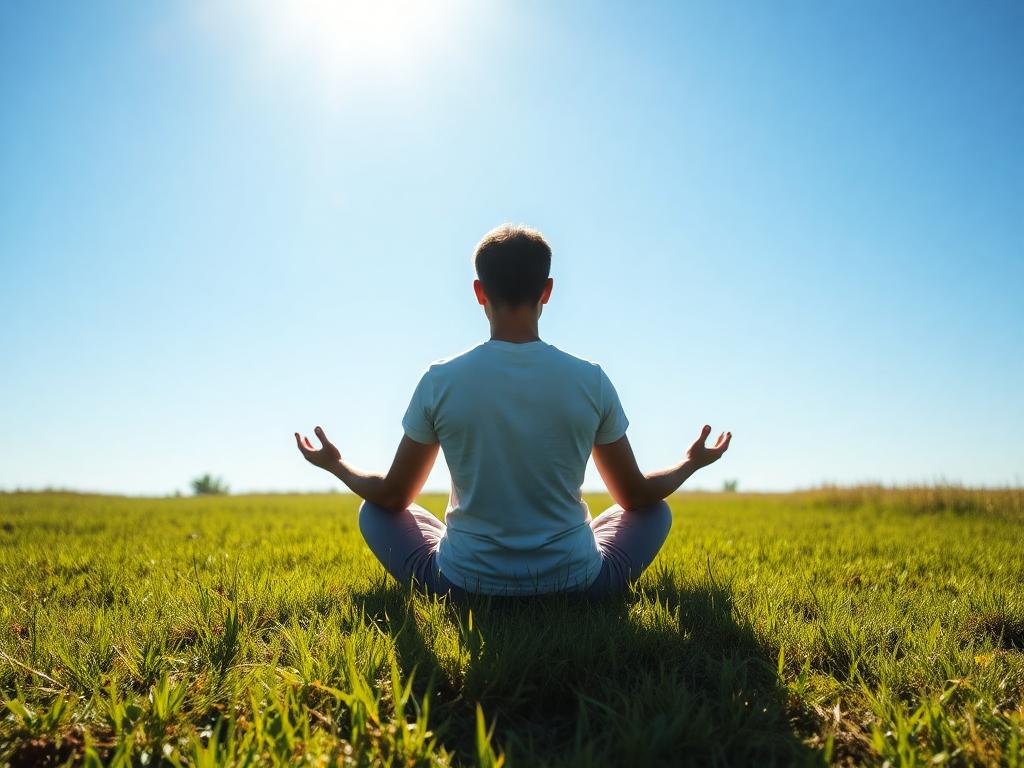Meditation Techniques for Beginners

Introduction: The Power of Meditation for Beginners
Meditation has been practiced for thousands of years and is one of the most effective ways to improve mental, emotional, and physical well-being. In today’s fast-paced world, more and more people are turning to meditation to reduce stress, improve focus, and achieve inner peace.
For beginners, the thought of sitting in silence for extended periods can seem daunting. However, meditation doesn’t require hours of practice or any special equipment. Whether you’re looking to relax, focus your mind, or reduce anxiety, meditation can help. In this article, we’ll explore various meditation techniques for beginners that are easy to learn and integrate into your daily routine.
What is Meditation?
Meditation is a mindfulness practice that involves focusing your attention, calming the mind, and achieving a state of mental clarity and relaxation. It can be practiced in many forms, including sitting quietly, focusing on your breath, or repeating a mantra. The goal of meditation is not to empty the mind entirely but to become more aware of your thoughts and feelings and develop a deeper connection with the present moment.
The benefits of meditation are numerous, ranging from reduced stress and anxiety to better sleep, improved focus, and enhanced emotional well-being. With regular practice, you can experience greater mindfulness and clarity in your daily life.
Benefits of Meditation for Beginners
Meditation offers a wide range of benefits that can improve both mental and physical health. Some of the most notable benefits include:
- Stress Reduction: Meditation helps lower cortisol levels, the body’s primary stress hormone, reducing feelings of tension and anxiety.
- Improved Focus and Concentration: Regular meditation practice can enhance cognitive function and mental clarity, helping you concentrate better throughout the day.
- Better Emotional Health: Meditation encourages emotional awareness and regulation, leading to greater emotional stability and reduced mood swings.
- Improved Sleep: Meditation can help relax your mind and body, making it easier to fall asleep and stay asleep.
- Increased Self-Awareness: Meditation helps you become more mindful of your thoughts and emotions, allowing you to respond thoughtfully rather than react impulsively.
Now that we understand the benefits, let’s explore some simple meditation techniques for beginners.
1. Mindfulness Meditation
Mindfulness meditation is one of the most popular and accessible forms of meditation. It involves paying attention to your thoughts, feelings, and bodily sensations in a non-judgmental way. This practice helps you become more aware of the present moment, reducing stress and anxiety.
How to Practice Mindfulness Meditation:
- Find a quiet space: Sit in a comfortable position, either on a chair or cushion. Close your eyes or keep them slightly open with a soft gaze.
- Focus on your breath: Bring your attention to your breath. Notice the sensation of the air entering and leaving your body.
- Observe your thoughts: As you meditate, thoughts will come and go. Instead of judging or reacting to them, simply observe them and let them pass, bringing your focus back to your breath.
- Practice regularly: Start with 5-10 minutes a day and gradually increase the time as you feel more comfortable.
Mindfulness meditation helps develop a sense of calm and presence that can extend throughout your day.
2. Breathing Meditation (Pranayama)
Breathing meditation, also known as pranayama, is a powerful technique where you focus on controlling and deepening your breath. This practice can help calm the nervous system, reduce stress, and improve overall well-being.
How to Practice Breathing Meditation:
- Find a comfortable position: Sit in a relaxed posture with your back straight. Close your eyes or keep a soft gaze.
- Breathe deeply: Begin by taking deep, slow breaths in through your nose, allowing your lungs to fill completely.
- Focus on your breath: As you inhale and exhale, focus your attention solely on the sensation of the breath. Try to make your breathing smooth and steady.
- Use a counting technique: For example, inhale for a count of four, hold the breath for four, exhale for a count of four, and pause for a count of four. Repeat this cycle for a few minutes.
Breathing meditation is a simple yet effective technique for beginners, and it can be practiced anytime you feel stressed or need to center yourself.
3. Guided Meditation
Guided meditation is a popular technique where a teacher or recording leads you through the meditation process. The guidance can involve visualizations, body scans, or mindfulness exercises. This is an excellent option for beginners who may find it difficult to meditate on their own.
How to Practice Guided Meditation:
- Find a guided meditation: Many apps and websites offer free guided meditations. Some popular ones include Calm, Headspace, and Insight Timer.
- Get comfortable: Sit or lie down in a comfortable position. Close your eyes and focus on the voice guiding you.
- Follow the instructions: Let the guide take you through the meditation. They may lead you through relaxation techniques, breathing exercises, or visualizations designed to calm your mind.
- Let go of distractions: If your mind wanders, gently bring your attention back to the guide’s voice.
Guided meditation can be particularly helpful for beginners as it provides structure and direction, making it easier to stay focused.
4. Body Scan Meditation
Body scan meditation is a technique that involves focusing on different parts of your body, noticing any sensations or tension. This practice can help you develop a deeper connection to your body and relax physically and mentally.
How to Practice Body Scan Meditation:
- Lie down or sit comfortably: Find a position where you can fully relax. Close your eyes and take a few deep breaths.
- Focus on each body part: Start with your toes and gradually move up through your body, focusing on each body part. As you focus on each part, observe any sensations, tightness, or discomfort.
- Relax each area: If you notice tension in a certain area, imagine sending your breath to that part of your body and consciously relaxing it.
- Continue the scan: Slowly work your way up your body, paying attention to your legs, torso, arms, and head.
Body scan meditation is a great way to increase mindfulness and reduce physical tension, especially if you’ve been experiencing stress or discomfort.
5. Loving-Kindness Meditation (Metta)
Loving-kindness meditation, or Metta, is a practice that involves sending love and well-wishes to yourself and others. It promotes compassion, kindness, and emotional well-being.
How to Practice Loving-Kindness Meditation:
- Sit in a comfortable position: Close your eyes and take a few deep breaths.
- Repeat loving phrases: Silently repeat phrases such as, “May I be happy, may I be healthy, may I be safe.” Feel the warmth and compassion as you say these words.
- Expand your focus: After sending loving-kindness to yourself, begin to send it to others. Start with loved ones, then extend it to acquaintances, and eventually to all beings.
- End with self-compassion: Always return to yourself, sending the same loving-kindness back to you.
Loving-kindness meditation can help cultivate empathy, compassion, and a sense of interconnectedness with others.
Tips for Success in Meditation
- Start small: Begin with just 5-10 minutes per session. Gradually increase the duration as you get more comfortable.
- Be consistent: Try to meditate daily, even if it’s just for a few minutes. Consistency is key to building a meditation habit.
- Don’t judge your practice: It’s normal for your mind to wander. Gently bring your focus back to your breath or mantra without judgment.
- Create a peaceful space: Find a quiet, comfortable space where you won’t be disturbed during your practice.

Conclusion: Start Your Meditation Journey Today
Meditation is a simple yet powerful practice that can improve mental clarity, reduce stress, and enhance your overall well-being. By starting with beginner-friendly techniques like mindfulness meditation, breathing exercises, or guided sessions, you can develop a consistent meditation practice and experience its numerous benefits.
The key is to start small, be patient with yourself, and incorporate meditation into your daily routine. Over time, you’ll find that meditation becomes a natural and valuable part of your life, bringing you greater peace and balance.


